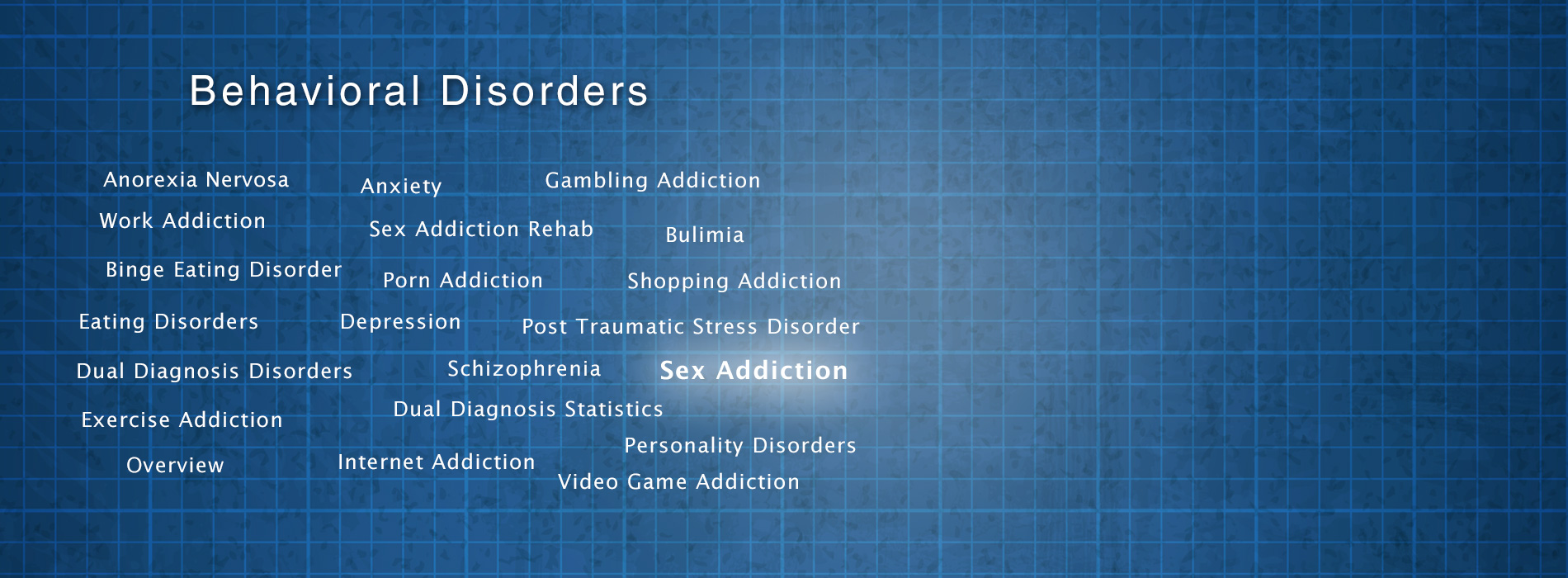Sex Addiction
Sexual addiction is not recognized as a formal diagnosis in the most recent edition of the Diagnostic and Statistical Manual of Mental Disorders (DSM), so definitions of sex addiction vary. It was included in the previous version, the DSV-IV-TR under “sexual disorders not otherwise specified” as “distress about a pattern of repeated sexual relationships involving a succession of lovers who are experienced by the individual only as things to be used”. This entry was removed for the DSM-V, but the World Health Organization classifies it as “excessive sexual drive”. In the field of psychiatry, the condition is characterized by compulsion to perform sexual acts and pervasive sexual thoughts despite negative consequences from sexual encounters. Sex addiction is separate from impulse disorders and borderline personality disorder, of which sexual promiscuity is often a symptom.Like drug addiction, sex addition activates the reward-reinforcement mechanism in the brain through the release of “feel-good” chemicals such as dopamine and oxytocin. This reward reinforces the behavior and compels the person to repeat it. Individuals with sex addiction may have a malfunction of their dopamine receptors, resulting in addiction.
There might also be emotional reasons for the addiction, and sex may be used to mediate feelings of inadequacy or stress. Sex addition can also be linked with childhood abuse. However, every case of sexual addiction is different and has different causes. Not every person with an abnormally high sex drive classifies as an addict. Sexual addicts are preoccupied with sex to the point where it interferes with normal functioning. Sex can be used as a healthy stress reliever, but addicts seek out stress even when there are physical or emotional risks involved and persist in their behaviors even though they might feel shame or guilt. Sexual addicts may also engage in risky behaviors despite knowledge of potential negative consequences, such as unprotected sex or sex with strangers.
Sexual addiction may or may not involve a paraphilia, in which the person is aroused by a non-conventional action, or object. One example of a paraphilia is voyeurism, where the person is aroused by watching the sexual acts of others.
The most common long-term effects of sex addiction are venereal diseases and unwanted pregnancy. Sex addicts sometimes remain in abusive relationships so they will have easy access to sex. They also might jump from relationship to relationship because they fear being alone. If their addiction involves paying for sexual acts with prostitutes or at a massage parlor, it could result in financial or legal troubles as well. Sex addiction is co-morbid with depression, meaning that they often occur together.
Successful treatment for sex addiction involves therapy and possibly medication. Therapy is usually out-patient and aims to address the underlying cause of the addiction and help the patient avoid or cope with triggers. Many anti-depressant or mood-stabilizing medications have reduced sex drive as a side effect and could be used for off-label use to treat sexual addiction. Sex Addicts Anonymous and Sexaholics Anonymous are often used along with therapy and medication to help the person build a support system to foster their recovery.

